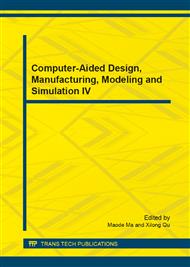p.1071
p.1079
p.1084
p.1089
p.1094
p.1098
p.1104
p.1110
p.1115
Isolation and Identification of Microbes in High-Salinity Environmental Microorganism in Disposal of Salt-Contained Wastewater
Abstract:
Along with the rapid development of today's society, all sorts of wastes produced from human life and production are discharged into the natural environment, so that a certain impact has been exerted on air, soil, lakes, and oceans. The wastes discharged into the natural environment not only contain some toxic substances and various compounds difficult to degrade, but also are with the characteristics of strong acid, strong alkali, high temperature, and high salinity, so that the general microorganisms are hard to survive in this environment. However, there are some extreme microorganisms to gradually fit the environment in the process of evolution, and the microorganisms include alkalophilic bacteria, basophilic bacteria, halophilic bacteria, etc. Halophilic bacteria grow mainly in sea and salt lake, and also have unique physiological features, while the application of high-salinity microbes to the disposal of salt-contained wastewater is of a broad prospect and an important social value. In this paper, the isolation and identification of microorganism in a high-salinity environment and their application to the disposal of salt-contained wastewater are mainly analyzed.
Info:
Periodical:
Pages:
1094-1097
Citation:
Online since:
October 2014
Authors:
Price:
Сopyright:
© 2014 Trans Tech Publications Ltd. All Rights Reserved
Share:
Citation:


